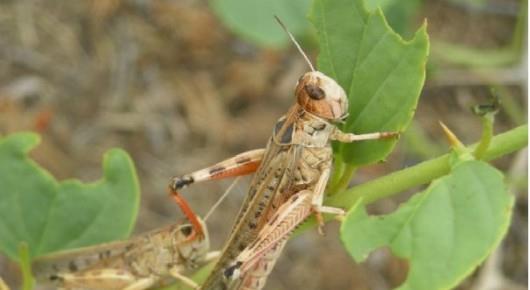Countries meet to bolster each other in regional fight against locusts

Locusts are an ancient enemy of agriculture, and the goal in managing them is to reduce the threat they pose. Due to their migratory nature and voracious feeding habits, locusts affect not just individual countries but rather entire regions, damaging fields of cereal crops, leguminous plants, sunflowers, vegetables, orchards, and natural vegetation.
As they have every autumn since 2009, delegates from ten countries in the Caucasus and Central Asia (Afghanistan, Armenia, Azerbaijan, Georgia, Kazakhstan, Kyrgyzstan, Russian Federation, Tajikistan, Turkmenistan, and Uzbekistan) are meeting this year with FAO experts to present the locust situation and discuss recent and past activities.
The workshop runs from 19 to 23 November in Bishkek, Kyrgyzstan. Donors to the FAO programme under which this workshop is being held also will be in attendance.
The purpose of the workshop is to review national locust situations and management activities in the concerned countries. Participants will discuss the implementation of the programme in 2018 and define the 2019 workplan based on locust forecast, technical needs and available resources. Activities cover a wide range of topics, including national and regional bulletins, training, cross-border surveys, monitoring and analyzing systems, and the reduction of risk to human health and the environment during control operations.
The workshop will also provide an opportunity to discuss long-term and sustainable mechanisms for regional cooperation on locust management. There are various good examples of such mechanisms, but the type these countries will choose depends on core objectives, expected functions, and financial aspects.
“The countries, together with FAO, have traveled a long way and achieved a number of concrete results since the start of the programme,” said FAO’s Annie Monard, leader of the Locusts and Transboundary Plant Pests and Diseases team. “Through the FAO-facilitated cooperation, they have improved their knowledge and skills on locust management, including modern tools to better monitor, analyze and forecast locust population dynamics.”
Crop and livestock production in the Caucasus and Central Asia provide a staple source of food and income for subsistence and commercial family farmers. Therefore, damages are not only agricultural, but also economic and social.
The workshop will discuss the preventive locust strategy, which relies on appropriate monitoring. Two crucial tools were developed for this purpose: the Automated System of Data Collection and the Caucasus and Central Asia Locust Management System (CCALM). The first was created in 2013 to facilitate collection and sharing of standardized locust data and serves as a basis for the customized CCALM geographic information system, which allows for improved data analyses and forecasts.
Operations to control locust populations present a risk for human health and the environment, Monard said. During the workshop, participants will review the progress made by the recently created dedicated national teams on monitoring control operations and mitigating risks.
Participants also will hear an update on the current status of the practical guidelines on pesticide risk reduction for locust control in Caucasus and Central Asia, she added.
21 November 2018, Bishkek, Kyrgyzstan
